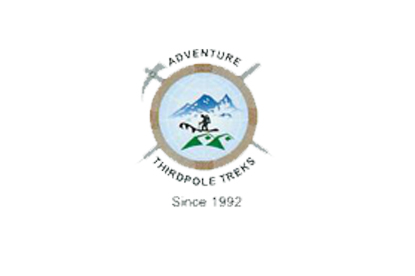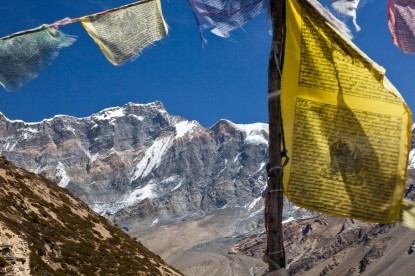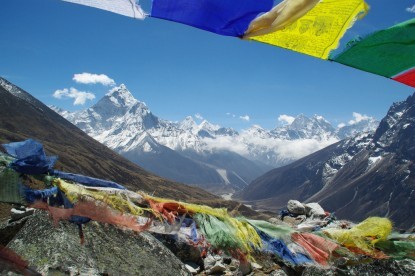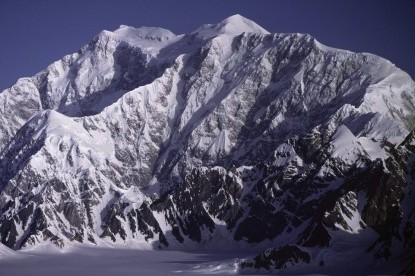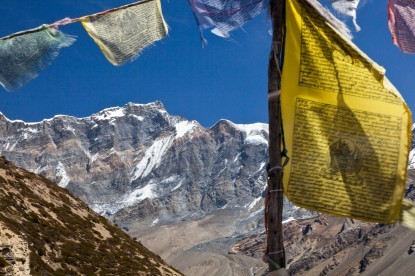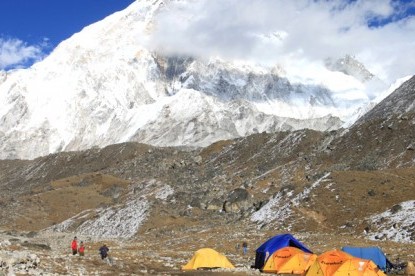Hiunchuli is the fourth highest peak among the many trekking peaks of Nepal and is one of...
The Great Himalayan Range of 800 kilometers lies within Nepal. This area houses a convergence of 1310 magnificent peaks towering over 6000 meters, including 8 of the worlds highest 14 peaks. Such high levels of high mountain concentration are not found anywhere else in the world.
The Government of Nepal has categorized various peaks as suitable for mountaineering expeditions which involves significant sound technical arrangements and are also relatively costly.
Likewise, it has specified the number of 33 peaks which are called Trekking Peaks. These peaks are allowed for Peak Climbing and are controlled by the Nepal Mountaineering Association (NMA). Within these 33 peaks, two groups are distinct: the A peaks and the B peaks. As per this categorization, climbing fees are different.
List of Group A Peak
ABI (6097m) - Mahalangur Region
Bokta (6143m) - Kanchenjunga Region
Chekigo (6257m) - Gaurishanker Region
Chhukung Ri (5550m) - Khumbu Region
Cholatse (6440m) - Khumbu Region
Kyazo Ri (6186m) - Mahalangur Region
Langshisha Ri (6427m) - Langtang Region
Larkya Peak (6010m) - Manaslu Region
Lobuche West (6145m) - Khumbu Region
Machermo (6237m) - Mahalangur Region
Nirekha (6159m) - Mahalangur Region
Ombigaichen (6340m) - Mahalangur Region
Phari Lapcha (6017m) - Mahalangur Region
Singu Chuli - Fluted Peak (6501m) - Annapurna Region
Yala Peak (5732m) - Langtang Region
Yubra Himal (6035m) - Langtang Region
List of Group B Peak
Chulu East (6584m) - Manang region
Chulu West (6419m) - Manang Region
Hiunchuli (6441m) - Annapurna Region
Island Peak - Imja Tse (6160m) - Khumbu Region
Kongma Tse - Mehra Peak (5849m) - Khumbu Region
Kusum Kanguru (6367m) - Khumbu Region
Kwangde Ri (6011m) - Khumbu Region
Lobuche East (6119m) - Khumbu Region
Mardi Himal (5587m) - Annapurna Region
Mera Peak (6654m) - Khumbu Region
Naya Kanga - Ganjala Chuli (5844m) - Langtang Region
Paldor (5896m) - Langtang Region
Pharchamo (6187m) - Rolwaling Region
Pisang (6091m) - Manang Region
Pokhalde (5806m) - Khumbu Region
Ramdung Go (5925m) - Rolwaling Region
Tharpu Chuli (5663m) - Annapurna Region
Introduction to Peak Climbing in Nepal
Peak climbing in Nepal is an exhilarating adventure that takes mountaineers to some of the highest peaks in the world. Nepal is home to 8 of the world's 14 highest peaks, making it a popular destination for climbers seeking to scale new heights.
Best Time for Peak Climbing in Nepal
The best time for peak climbing in Nepal is from March to May and September to November, when the weather is mild and the skies are clear. During winter (December to February), the temperatures are too cold for comfortable climbing, and during monsoon season (June to August), the conditions can be dangerous due to heavy rainfall.
Popular Peaks for Climbing in Nepal
Nepal offers a range of peaks for climbing, from easy treks to challenging expeditions. Some of the popular peaks for climbing in Nepal include Island Peak, Mera Peak, Lobuche Peak, Pisang Peak, and Yala Peak.
Training and Preparation for Peak Climbing in Nepal
Peak climbing in Nepal requires a high level of physical fitness and technical skill. Climbers should engage in regular training to build endurance, strength, and flexibility. It is also important to acclimate to the altitude and pack appropriate gear and equipment.
Safety Considerations for Peak Climbing in Nepal
Peak climbing in Nepal can be dangerous, and safety should always be a top priority. Climbers should choose a reputable climbing company with experienced guides and proper safety equipment. They should also be aware of the risks of altitude sickness and other hazards and take necessary precautions.
Cultural and Natural Experiences During Peak Climbing in Nepal
Peak climbing in Nepal offers not only a thrilling adventure but also opportunities for cultural and natural experiences. Climbers can explore ancient temples and traditional villages, witness unique wildlife and ecosystems, and interact with local communities and customs.
Conclusion
Peak climbing in Nepal is an ultimate adventure for mountaineers seeking to push their limits and conquer new heights. With its stunning natural beauty, rich cultural heritage, and diverse peak options, Nepal is a top destination for peak climbing. Contact Adventure Thirdpole Treks to plan your next peak climbing adventure in Nepal!
Bonus: Top 10 Peaks from Nepal in the World
Mount Everest (8,848 m)
Kanchenjunga (8,586 m)
Lhotse (8,516 m)
Makalu (8,485 m)
Cho Oyu (8,188 m)
Dhaulagiri (8,167 m)
Manaslu (8,163 m)
Annapurna (8,091 m)
Shishapangma (8,027 m)
Gauri Shankar (7,134 m)
